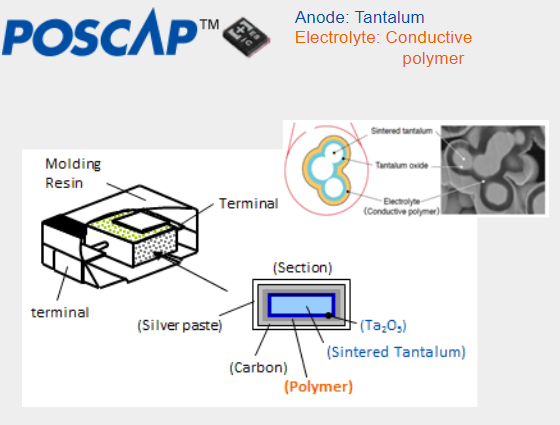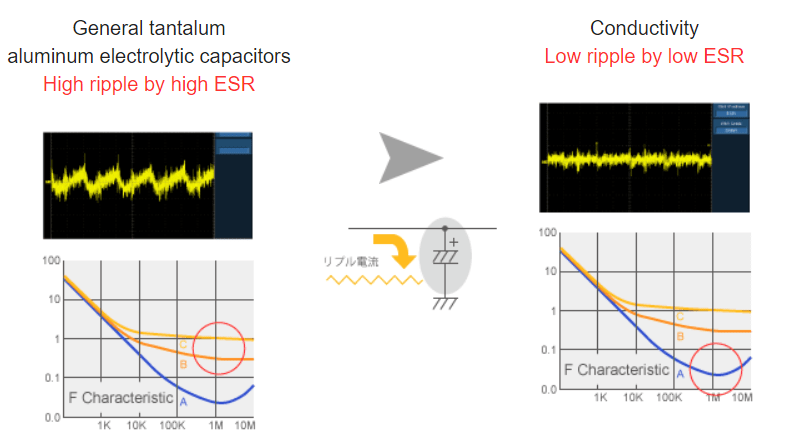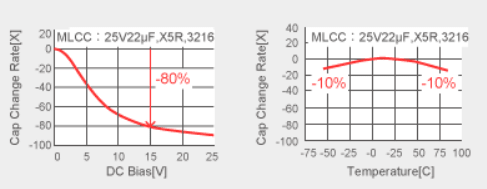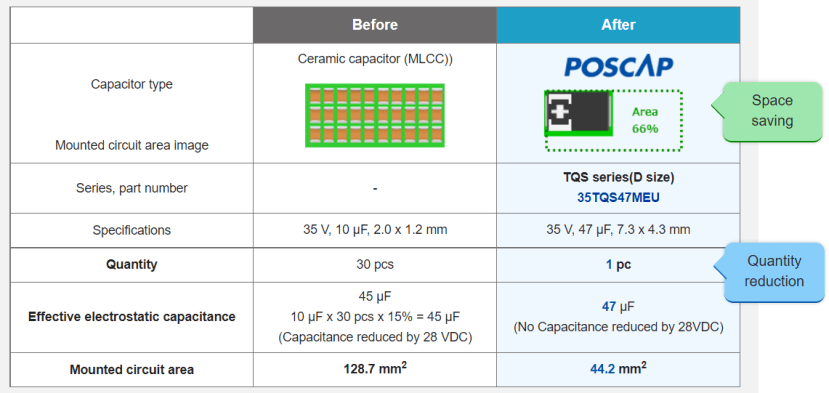Achieve Low ESR ! Conductive Polymer Tantalum Solid Capacitor "POSCAP"
Follow articleHow do you feel about this article? Help us to provide better content for you.
Thank you! Your feedback has been received.
There was a problem submitting your feedback, please try again later.
What do you think of this article?
What is a Conductive Polymer Tantalum Solid Capacitor (POSCAP)?
A conducting polymer tantalum solid capacitor (POSCAP) is a type of tantalum solid electrolytic capacitor that uses tantalum as the anode and tantalum oxide as the dielectric, as shown in the figure below. An electrolyte is a conductive polymer (polypyrrole, polythiophene). It conducts electricity 1,000 times better than the manganese dioxide used in ordinary tantalum electrolytic capacitors. This makes it possible to make capacitors with very low ESR.
POSCAP Features
As mentioned earlier, POSCAP achieves low ESR by using conductive polymers in the electrolyte. In addition, it is an easy-to-use capacitor with excellent high-frequency characteristics and stable characteristics independent of temperature and voltage. It also has the advantage of being safer than general tantalum electrolysis.
For more information on POSCAP features, please visit this page.
Recommended uses for POSCAP
Because POSCAP uses a conductive polymer to achieve a low ESR, it has ideal frequency characteristics and a large maximum allowable ripple current for noise removal at high frequencies, making it ideal as a backup capacitor for smoothing switching power supplies and for load fluctuations around PC CPUs. In particular, its low component height makes it ideal for SSDs and other applications requiring compact mounting.
Cost reduction measures using POSCAP
As shown in the figure, laminated ceramic capacitors (MLCC) have the property that when used at high voltages, the capacitance decreases significantly from the rated value. Depending on the voltage, the capacity may be reduced by as much as 80% of the rated capacity. Also, the capacitance of the MLCC is not stable against temperature, and the capacitance decreases at both low and high temperatures. Depending on the temperature, it may be reduced by as much as 10% from the rated capacity. To compensate for this MLCC nature, several times the rated capacitance may be required. POSCAP, on the other hand, differs from MLCC in that it hardly reduces capacitance even at high voltage or high or low temperature.
So you can replace many MLCCs with a single POSCAP.
For specific cost savings, please refer to the example of SSD below.
In addition, reduction proposals are listed for each application such as servers and accelerators.
Please refer to this page.
In addition, we have created a new page for users to download symbol prints and 3D CAD data necessary for reviewing the products we have introduced. We hope we can help you as we shorten your circuit design.
(Though 3D CAD linkage here is for the above-inquired model: 35TQS47MEU, you can download for also other parts when you search for the part number you need.)





